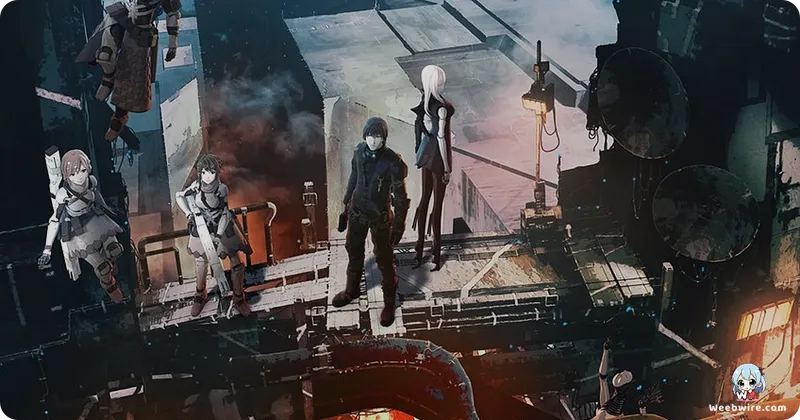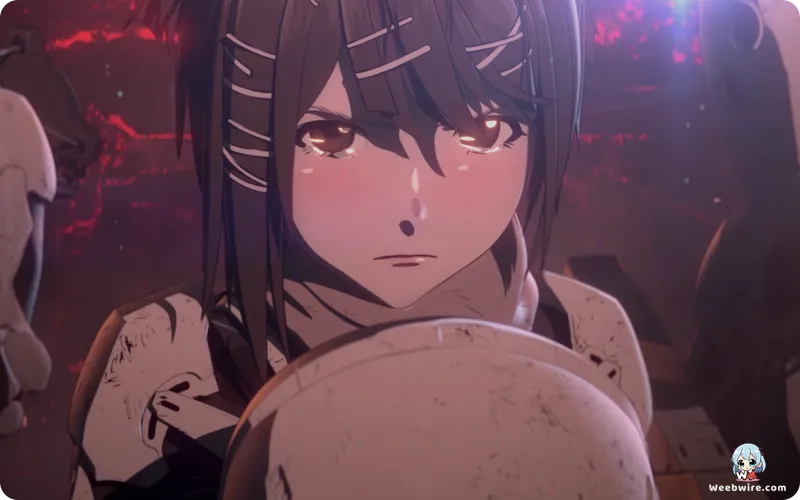BLAME! Unveiled: Exploring the Dystopian Masterpiece's Architectural Vision and Cinematic Legacy

Unveiling the Colossal World of BLAME!
Step into the stark, awe-inspiring realm of BLAME!, a dystopian science-fiction masterpiece that truly redefines visual storytelling. At its heart lies the colossal, endlessly expanding MegaStructure, a setting unlike any other. Both Tsutomu Nihei's visionary manga and the acclaimed 2017 anime film by POLYGON PICTURES immerse audiences in a unique blend of architectural grandeur, existential dread, and relentless, often silent, action. This exploration delves into the profound ingenuity behind its creation and enduring impact.
Tsutomu Nihei's Architectural Vision
At BLAME!'s core is its creator, Tsutomu Nihei, whose background in architecture profoundly shapes every panel and scene. The MegaStructure is far more than a mere backdrop for Killy's enigmatic quest; it functions as a character in itself. Its impossibly vast, labyrinthine corridors and seemingly infinite expansion are meticulously rendered, fostering a palpable sense of isolation and overwhelming scale. Nihei's expertise allows him to craft environments that are both immense and chillingly sterile, with intricate detailing that showcases his unparalleled artistic vision.
Killy: The Silent Protagonist
Killy, the stoic protagonist, communicates primarily through his relentless actions as he pursues the elusive Net Terminal Gene. This minimalist approach compels audiences to interpret his motivations and the dire circumstances he navigates. His signature weapon, the Graviton Beam Emitter (GBE), is a terrifying extension of his mysterious purpose, effortlessly carving through the MegaStructure's formidable layers. Its overwhelming power provides visceral thrills, depicted with a casual brutality that reflects the harsh realities of this desolate world.

Adapting the Unadaptable: POLYGON PICTURES' Challenge
The challenging adaptation by POLYGON PICTURES, a studio renowned for pioneering CGI in anime (known for works like Knights of Sidonia), aimed to translate Nihei's intricate designs into a fluid cinematic experience. The studio meticulously replicated the manga's dramatic shadows and profound depth in 3D, largely preserving its raw essence while broadening its accessibility to a wider audience.
A key divergence between the two forms lies in their narrative approach. The cryptic original manga heavily relied on environmental storytelling, fostering a deep sense of mystique and unanswered questions. The film, however, focused on the Electro-Fishers arc, incorporating more explicit dialogue to guide new viewers. This choice, while a necessary compromise for accessibility, subtly balanced the manga's inherent bleakness with moments of human connection and clearer narrative progression.
The Power of Sound Design
Beyond its striking visuals, the film's intricate sound design is indispensable to its immersive quality. Sparse dialogue and the vastness of the environments amplify ambient sounds: echoing footsteps, metallic groans, and the chilling mechanical sounds of the Safeguard create an oppressive and ever-present atmosphere. The GBE's thunderous roar further amplifies its destructive power, enhancing the pervasive isolation and constant threat that define Killy's journey.
A Lasting Legacy
BLAME! has indelibly marked the science fiction genre, influencing countless works that followed. It challenges conventional narratives by prioritizing mood and atmosphere, cultivating a dedicated and passionate following among its readers and viewers. For hard sci-fi aficionados, BLAME! endures as a benchmark, a work that defies convention through its profound visual storytelling and cosmic horror, proving that sometimes, less is more when delivered with breathtaking artistic ambition.
Credits
BLAME!
Author
Tsutomu Nihei
Cover Art
Tsutomu Nihei
Studio
POLYGON PICTURES
Publisher
Kodansha
Producers





